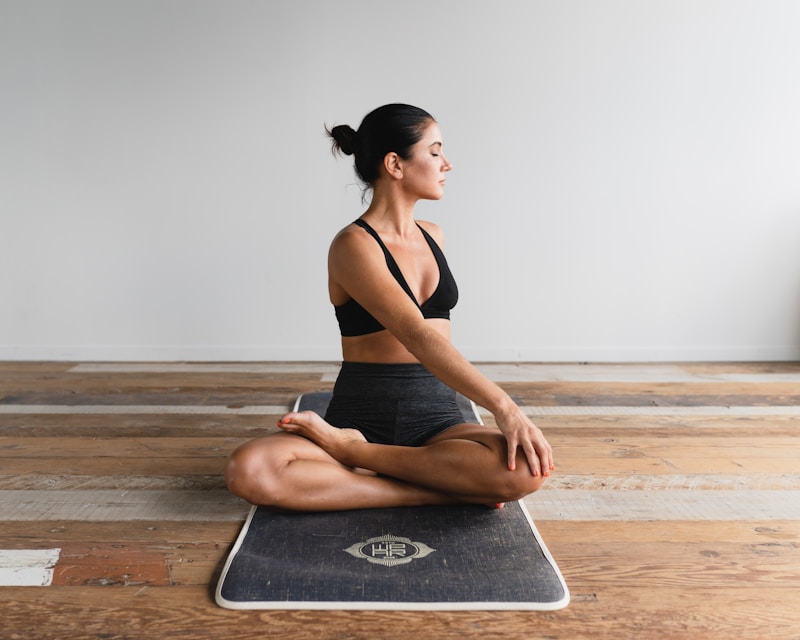Vinyasa Flow is hands down one of the most, if not the single most popular styles of yoga. It is widely practiced by millions of yoga practitioners and can be very versatile depending on the studio you visit.
If we translated Vinyasa, it would loosely translate to “arranging something in a special way”. That is so much a part of what yoga is, isn’t it? Yoga is about doing something with purpose and guidance either from a guide or within. With Vinyasa Flow, you flow with purpose. A flow is like a dance. Most asanas are only held for a moment before one must transform and move into the next one.
The idea is that the whole practice will feel like one larger pose because they are put together seamlessly in a way that connects the body and breath. In a Vinyasa Yoga Practice, there is rarely any stopping in a pose to dig into the finer details of it.
The Flow of Breath
A key component of Vinyasa, as well as yoga in general, is the focus on breath. In the vast majority of Vinyasa classes I have taken, the teacher always guides us back to our breath. The most challenging aspect of this kind of practice may not even be the constant movement that keeps your heart rate up but is the need to focus on pairing your own breath with your movements. It is easier said than done and many teachers will have you rest a moment after a sun salutation or a vinyasa flow before moving on just so that you can come back to your breath and mind.
See Also: Here’s Why Doctors Recommend Yoga For A Healthy Heart
What is Vinyasa Flow?
You may hear your teacher say “Okay, now step back and take your vinyasa flow,” or “flow through your vinyasa.” A newcomer may be confused. What? Isn’t that the style of this class I’m taking? The answer is yes and no.
While the class that says this the most is indeed a Vinyasa class, when a teacher says to take a vinyasa they are referring to flowing through chaturanga to a low cobra and upward dog, depending on your practice. Because of terms like this and the fast paced nature of this practice, the Vinyasa style may not be suitable for beginners.
Though it is not necessarily the hardest in terms of postures, it is fast and if you do not know exactly what is being called out to do, you may end up frantically looking around to see what your neighbor is doing. This not only is distracting form the main purpose of Vinyasa, but can be very frustrating. Many studios offer beginner classes to Vinyasa. Here they break down the elements of the flow and allow you to find modifications if needed so that you can do everything safely while still being able to focus on your breath.
Vinyasa Variations
Because Vinyasa is so popular, it’s often a little different at each studio you visit. You may enjoy some more than others, and then there are always the studios who have taken the Vinyasa class in an entirely different direction. Think of the work Vinyasa as an umbrella. It encompasses numerous kinds of practices underneath it and often times as a result, can be a little different depending on where you go. One of the most prominent styles that fall under the umbrella of Vinyasa is Ashtanga.
Ashtanga vs. Ashtanga Vinyasa
Here we are again, with two different kinds of practice styles that are often mistaken for each other. Though not widely different, there are some key differences that go a long way in terms of what you may like and dislike.
Ashtanga Yoga is a very rigorous style. Not only is it fast-paced like Vinyasa Flow, but it also asks you to hold postures (which can really make one feel the burn in their legs). Held poses are usually held for five to six breaths and are completed with a Chaturanga. Ashtanga means eight limbs or branches, and the Ashtanga practice tends to have a deeper focus on all eight limbs of yoga.
Ashtanga Vinyasa is a bit more simplified when it comes to the branches of yoga you focus on. Ashtanga Vinyasa mostly focusses on the third and fourth branches of yoga: breath control and postures. This style is particularly more modern and involves more creative movement. Ashtanga Vinyasa commonly involves inversions as does Vinyasa Flow.
Give It a Go
Studios everywhere are offering Vinyasa Flow yoga, so it’s up to you to find the teachers whose teaching style fits you best. Since Ashtanga Vinyasa Flow is the YogaLondon house style, many of them will be graduates of the course, so give a big hello from YogaLondon when you see them!












